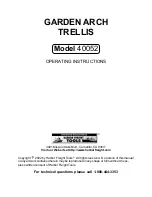
8
General Operation
8.1
Heat Transfer Fluid
Many fluids work with the 6331 bath. Choosing a fluid requires consideration
of many important characteristics of the fluid. Among these are temperature
range, viscosity, specific heat, thermal resistivity, thermal expansion, electrical
resistivity, fluid lifetime, safety, and cost.
Use the fluid table (Table 2 on page 32) and chart (Figure 4 on page 33) in the
User's Guide to aid in choosing the type of fluid that is best suited for your
application.
8.1.1
Temperature Range
One of the most important characteristics to consider is the temperature range
of the fluid. Few fluids work well throughout the entire temperature range of
the bath. The temperature at which the bath is operated must always be within
the safe and useful temperature range of the fluid used. The lower temperature
range of the fluid is determined either by the freeze point of the fluid or the
temperature at which the viscosity becomes too great. The upper temperature is
usually limited by vaporization, flammability, or chemical breakdown of the
fluid. Vaporization of the fluid at higher temperatures may adversely affect
temperature stability because of cool condensed fluid dripping into the bath
from the lid.
The bath temperature should be limited by setting the safety cutout so that the
bath temperature cannot exceed the safe operating temperature limit of the
fluid. See Section 9.10, Cutout.
8.1.2
Viscosity
Viscosity is a measure of the thickness of a fluid or how easily it can be poured
and mixed. Viscosity affects the temperature uniformity and stability of the
bath. With lower viscosity, fluid mixing is better therefore creating a more uni-
form temperature throughout the bath. This improves the bath response time
which allows it to maintain a more constant temperature. For good control the
viscosity should be less than 10 centistokes. 50 centistokes is about the practi-
cal upper limit of allowable viscosity. Viscosity greater than this causes very
poor control stability because of poor stirring and may also overheat or damage
the stirring motor.
Viscosity may vary greatly with temperature, especially with oils. Viscosity in-
creases as temperature decreases. When fluid viscosity increases, stability and
performance of the unit may decrease. Ensure that stirring occurs and all
temperatures.
When using fluids with higher viscosities the controller proportional band may
need to be increased to compensate for the reduced response time. Otherwise
the temperature may begin to oscillate.
27
8 General Operation
Heat Transfer Fluid
















































